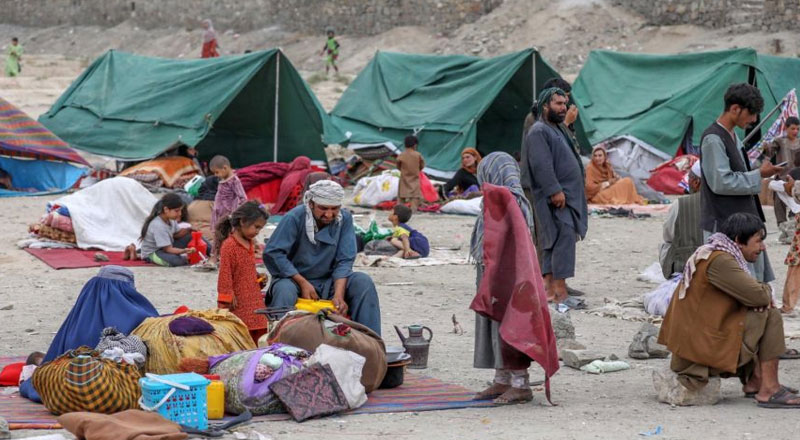The situation in Afghanistan is worsening day after day under the new Taliban regime due to lack of funds to procure food items and other essentials.
According to the Canada-based think tank International Forum for Rights and Security (IFFRAS), dearth of funds and an unprecedented surge in food prices have left thousands of Afghans hungry, forcing many to sell their children to survive.
“There are reports that 95 percent of Afghans do not have enough food to eat while half of the population is expected to face acute levels of hunger as winter sets in early November,” IFFRAS said.
A UN aid organisation said on Monday that more than half the population of Afghanistan – a record 22.8 million people – will face acute food insecurity from November.
This data regarding acute hunger was revealed in a new report issued by Integrated Food Security Phase Classification (IPC) by the Food Security and Agriculture Cluster of Afghanistan, co-led by the Food and Agriculture Organization of the UN and the UN World Food Programme (WFP).
WFP in its release stated that the lives, livelihoods and people’s access to food have been severely impacted by the combined impacts of drought, conflict, Covid-19, and the economic crisis. The report’s findings come as Afghanistan’s harsh winter looms, threatening to cut off areas of the country where families desperately depend on humanitarian assistance to survive the freezing winter months.
The IPC report further reveals that one in two Afghans will be facing crisis or emergency levels of acute food insecurity through November 2021 to March 2022 lean season. This calls for urgent humanitarian interventions to meet basic food needs, protect livelihoods and prevent a humanitarian catastrophe.
The report also notes that this is the highest number of acutely food insecure people ever recorded in the ten years the UN has been conducting IPC analyses in Afghanistan. Globally, Afghanistan is home to one of the largest number of people in acute food insecurity in both absolute and relative terms





